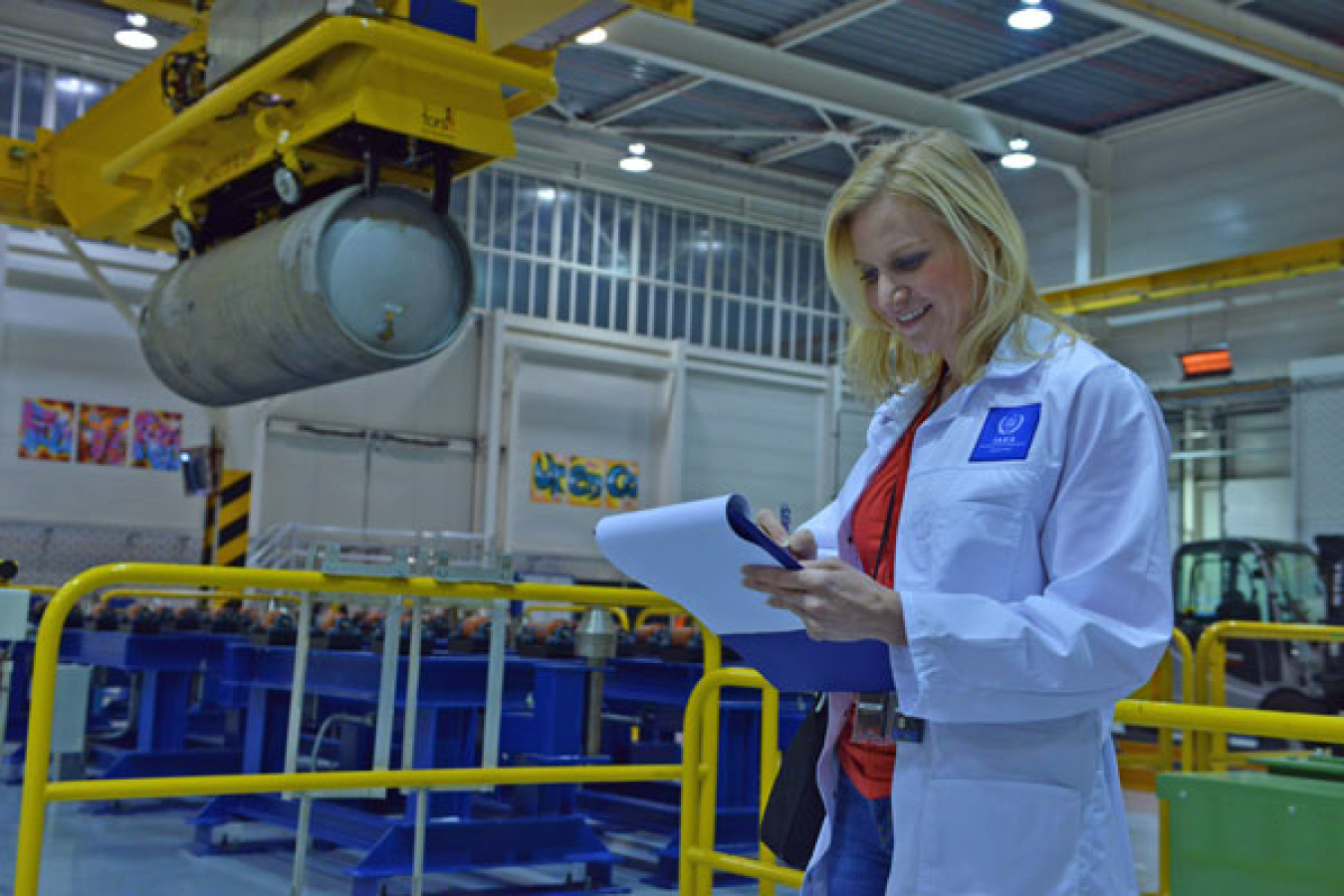International Nuclear Safeguards

There are U.S. and international legal requirements that will impact the exportability of nuclear reactor and facility designs. Considering these requirements early in the design process can mitigate risks of costly and time-consuming retrofits and reduce the burden on future customers. NNSA is committed to helping U.S. nuclear industry deploy their designs worldwide while meeting the highest standards of nonproliferation.
What are International Safeguards?
International nuclear safeguards are technical measures used to verify that a country is in compliance with its legal obligations under the Treaty on the Non-Proliferation of Nuclear Weapons to use nuclear material and technology only for peaceful purposes. These measures are applied by the International Atomic Energy Agency (IAEA) on nuclear material and facilities.
The IAEA’s nuclear safeguards objectives are to deter proliferation through early detection of:
- The diversion of nuclear material from facilities;
- The undeclared production or processing of nuclear material; and
- Undeclared nuclear material or activities in the State as a whole.
IAEA verification is based on information provided by States about their nuclear material inventories, facilities and nuclear-related capabilities, and access facilitated by States to their facilities and other locations. To achieve its objectives, the IAEA conducts inspections and applies technical measures, such as nuclear material accountancy; containment and surveillance; and unattended monitoring. Vendors and operators play an essential role in facilitating the implementation of these measures.
What is Safeguards by Design?
Safeguards by design (SBD) is a voluntary process to integrate features into a nuclear facility’s design to facilitate the application of IAEA safeguards.
By considering IAEA safeguards obligations early in the development of facility designs, the SBD process helps developers avoid costly and time-consuming retrofits or design changes. SBD prevents international safeguards obligations from unduly interfering with the smooth construction and operation of a facility.
SBD is an iterative process of dialog and information exchange among a developer, a State regulatory authority, a facility operator, and the IAEA.
The main steps in the SBD process are:
- Requirements: IAEA safeguards requirements are understood by designer.
- Conceptual Design: Designer becomes familiar with IAEA safeguards through engagement with NNSA subject matter experts, who may conduct an assessment of the design to identify potential issues and offer options to address them.
- Basic Design: NNSA and designer engage with the IAEA to familiarize the agency with the design and facilitate its development of a safeguards approach.
- Final Design: Facility design information is confidentially provided by the State in which the facility will be built to the IAEA.
- Construction: IAEA conducts design information verification and this continues throughout the lifecycle of the facility.
- Operations: IAEA confirms that safeguards equipment is functional and meets requirements, and the facility operator notifies IAEA in advance for any proposed design changes in the future.
What resources are available for vendors?
NNSA’s Office of Nonproliferation and Arms Control (NPAC) offers support to U.S. industry to consider safeguards implementation early in the design process. Support is tailored to meet specific developer needs. Offerings include educational opportunities at a conceptual level, as well as technical, one on one assessments usually conducted under NDAs. NPAC encourages early and frequent conversations with the IAEA, and can prepare U.S. industry for and facilitate these discussions.
Learn More
Within its IAEA safeguards-related programs, NPAC:
- Coordinates closely with the DOE Office of Nuclear Energy (DOE-NE)’s Advanced Reactor Safeguards sub-program, which supports near-term research in areas related to national requirements for material control and accounting and physical protection to help facilitate domestic deployment of advanced reactor designs
- Implements SBD projects with the advanced reactor community, including in direct partnership with SMR developers to support international deployment
- Coordinates with the Nuclear Energy Institute’s and NRC’s Advanced Reactor Working Groups; and
- Established an SBD working group to provide access to international safeguards experts, offer the most up-to-date SBD information to U.S. industry, and share lessons learned and examples of how SBD has been applied to nuclear facilities.

